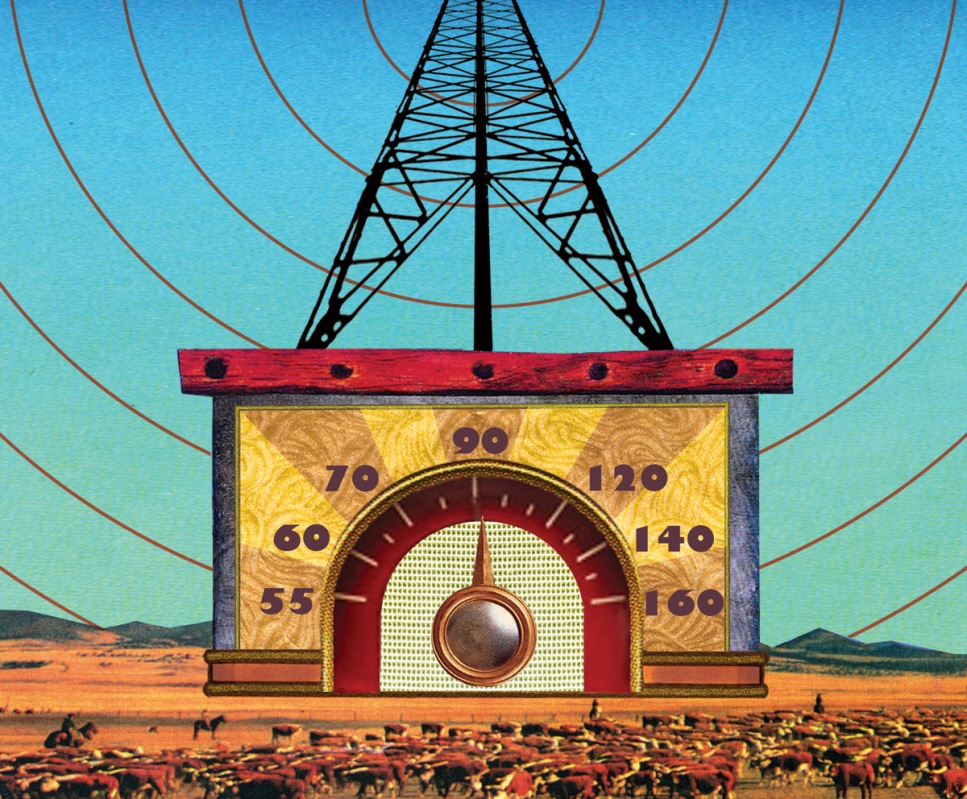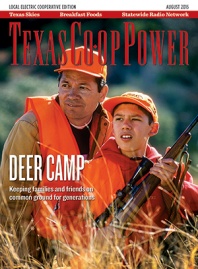It’s almost as if the radio gods have succeeded in cloning Jim Forsyth, the energetic news director of WOAI-AM in San Antonio. He delivers news and commentary to South Texas listeners, and his voice can be heard daily on stations in Alpine, Orange and Eastland.
For almost 30 years, Forsyth has been a key contributor to the Texas State Networks, which shares news, information and entertainment with 3 million listeners on 130 AM and FM stations.
Forsyth and other correspondents funnel story ideas to TSN’s flagship station, KRLD-AM in Dallas. There, a team of 30 headed by Director of News and Programming Paul Mann edits the information and voice recordings into five-minute newscasts then distributes them to affiliates beginning at 5:55 a.m. TSN also offers the half-hour show “Texas in the Morning” and 15-minute roundups at midday and in the late afternoon.
During legislative sessions, TSN’s Austin bureau contributes to the newscasts. And listenership spikes whenever there’s a tornado or a hurricane.
Oscar Rodriguez, president of the 1,300-member Texas Association of Broad- casters, calls TSN “an eyewitness to Texas history,” covering practically every major newsworthy occurrence of the past four decades. The Rio Grande Valley native recalls becoming a TSN listener in the 1960s and marveling at stories about Houston’s new Astrodome and HemisFair ’68, the world’s fair in San Antonio.
“TSN provides a window to the world, no matter where you are in Texas,” he contends. “It exists as a real lifeline, especially to smaller stations without a news department.”
Mann adds that TSN “constitutes an innovative way of getting news and information across the state. Our programming includes lifestyle and entertainment features, but news is still king.”
The innovation began in 1937 when Ruth G. Roosevelt, daughter-in-law of President Franklin D. Roosevelt, acquired KFJZ-AM in Fort Worth. Then she and husband Elliott moved quickly to establish a Texas network of affiliates.
The first and now largest of 30 state radio networks in the U.S., TSN was chartered August 2, 1938, and the new enterprise went on the air September 15, 1938, at the Casa Mañana outdoor theater in Fort Worth. That first broadcast drew a crowd of 5,000 with luminaries such as comedian Bob Hope and Texas Gov. James V. Allred.
As TSN’s flagship station then, KFJZ recruited affiliates with the promise of “the world’s finest radio entertainment and educational features.”
Some of those programming genres remain, such as “Texas Road Trippin’,” hosted by JD Ryan; “Texas Overnight with Charley Jones”; and “Texas Red Dirt Roads,” a musical entertainment program.
For a time, TSN headquartered at what was then called the Ballpark in Arlington, the Texas Rangers baseball team’s home field, and sports programming continues to be a specialty. The network distributes Dallas Cowboys and Houston Texans football games, Houston Astros baseball games and University of Texas Longhorns football games. Today TSN and KRLD are owned and operated by CBS Radio.
Forsyth says radio and TSN are more relevant today than ever. “Since nobody ‘sits down and listens to the radio,’ we fit in well with today’s media world,” he says.
He further believes TSN will remain vital because “there’s no state in the country in which people identify with their state and its image more than Texas. Even as this state grows and absorbs people from around the world, they quickly become part of the story of this state.”
—————-
Bob McCullough is a writer in the Hill Country.


